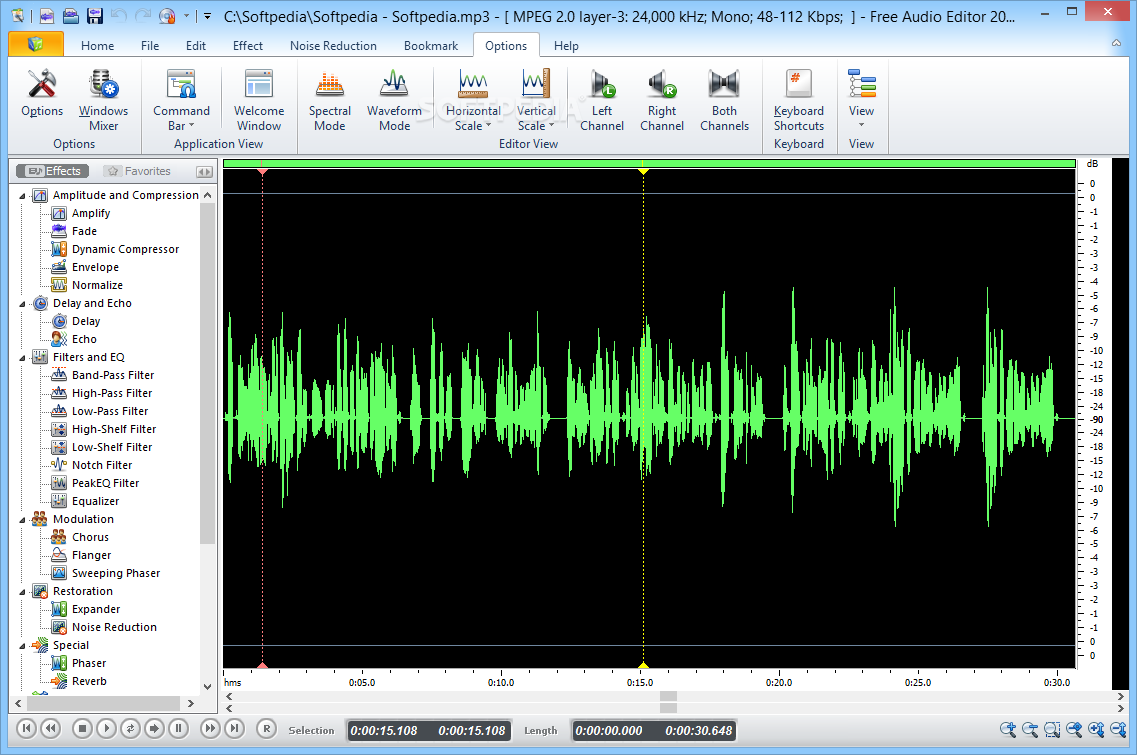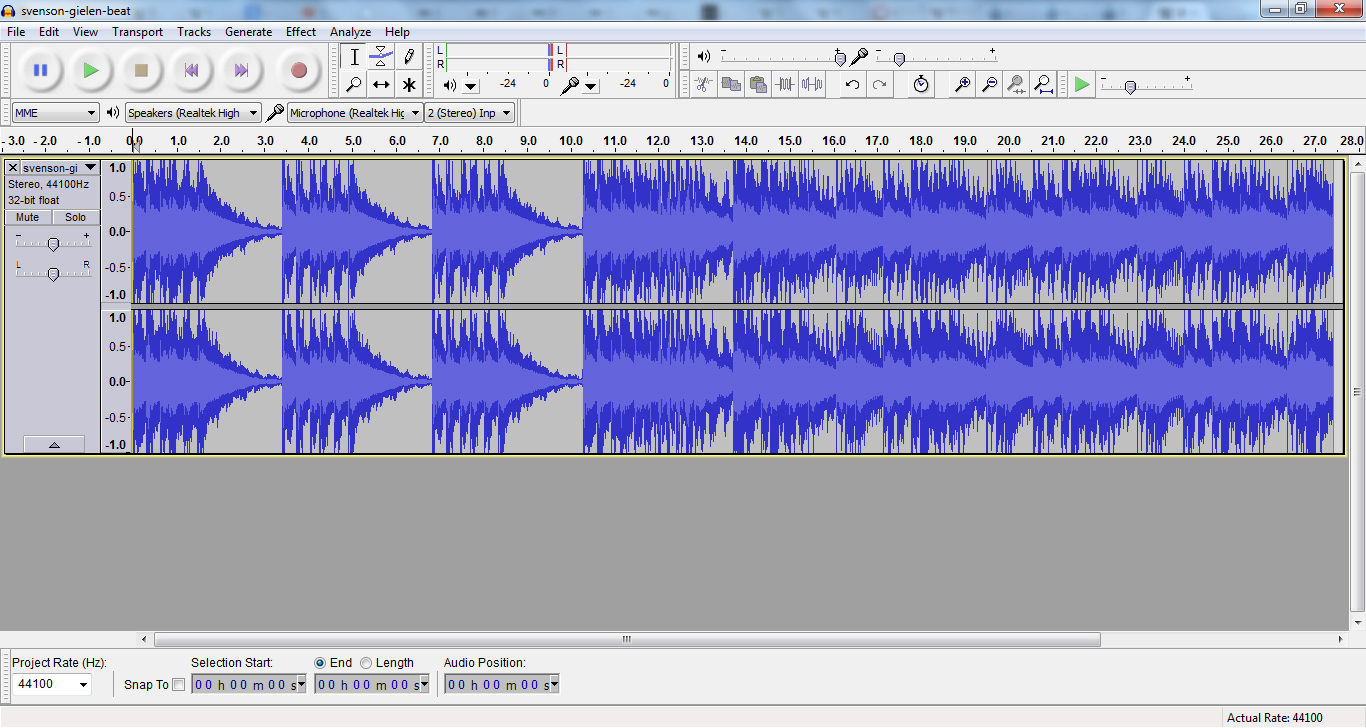
If checked, the second option to “Normalize stereo channels independently” will employ a different amount of effect onto each channel. Unlike Amplify, Normalize cannot go beyond the default of -1db, which is just below the maximum limit of your device/software.

“Normalize peak amplitude to ” tells audacity the limit to place on your audio file. For most purposes, only the last two options in the dialog box are relevant. If I want to balance a track, or if my track is generally too loud, I use the Normalize effect instead. Because Amplify applies the same amount of effect to the whole track, if my recorded audio is unbalanced, the track will retain the unbalanced sound even after the application. While I rarely do this, checking the checkbox next to “Allow clipping” will allow me to increase the volume of my audio recording beyond the maximum limits. After removing the clipped section, Amplify will increase the volume of the entire track based on how much it takes for the loudest portion of the track to reach maximum limits. Hence, amplification will be minimal if I employ it before removing the clipped audio, since the default setting will not allow me to amplify a track beyond the maximum limits. Amplify applies the same amount of loudness to the entire track base on the loudest moment in the track. In this example, I first remove the clipped audio before employing the effect. For a more detailed explanation of the effect, please check out the Audacity manual.įollowing the Noise Reduction effect, I then choose to either employ an Amplify effect or Normalize effect on my track.
#AUDACITY AUDIO EDITOR LESSON FULL#
The dialog box disappears (a silent success!), and I will then select the portions of my track that I want to remove the noise from (double-click or Ctrl/Cmd + A to select the full track). Next, I will navigate to the Noise Reduction effect (Effect > Noise Reduction), and click on the “Get Noise Profile” button. Before selecting the effect, I will highlight a portion of the track that I’ve previously recorded as room tone. The first step is to let Audacity know what it should identify as the “baseline” for noise/room tone. There are two steps to using the Noise Reduction effect. This helps me in reducing consistent background sound from my recorded audio file, such as the room tone of my recording environment. I then zoomed into that section of the audio clip and played the audio back to check if it was something I could easily remove and noted the timing of the clipped audio.Īfter inspecting my file, I then employ the Noise Reduction effect (Effect > Noise Reduction). In this example, when I zoomed out to inspect the waveform of my full audio clip, I noticed that there was a clipped section in my audio file (indicated in red) that required my attention before I moved to cleaning and editing. When working in Audacity, I always save my work-in-progress as an Audacity project file (.aup).Īfter importing and duplicating the audio file, I also listen to the full clip and do a quick visual inspection of the file.

I duplicate the track to avoid making direct edits in case of a file corruption or other non-reversible actions. To duplicate the track, select the original track then click on Edit > Duplicate (or use Ctrl/Cmd + D). Whenever I import my files into Audacity (File > Import > Audio), I always make sure to duplicate the original track before adding any filters or edits.

To that end, I have attached a short Gif for each step of the process followed by a description of the task. While learning Audacity can be intimidating, I hope to demystify part of the process. As such, make sure that the recording is as good as you can get it (refer to the workshop on Getting Good (Enough) Audio Recording for a more detailed discussion).įor the workshop, I focused on Audacity as: 1) it’s free! and 2) it’s cross-platform (Windows, MacOS, GNU/Linux, and Chromebook). when the audio file is clipped) or isolate tracks from loud background noise (e.g. For example, you can’t put back data you don’t have (e.g. Before Cleaning and Editingīefore getting started on audio editing, it is important to keep in mind that there is only so much you can do to salvage, clean, and/or edit a badly recorded audio file.
#AUDACITY AUDIO EDITOR LESSON FREE#
If you have questions about the post, please feel free to reach out via the Sound Studies commons group or through setting up a consultation session with the GC Digital Fellows.

For those who might be considering sound projects but were not able to participate in the previous workshops, I hope this post will be useful to you as I recap some of the key applications of Audacity from the workshop. This workshop comes after my Fall workshop on Getting Good (Enough) Audio Recording. A couple of weeks ago, I ran a workshop on the Basics of Audio Editing with Audacity.


 0 kommentar(er)
0 kommentar(er)
